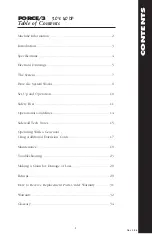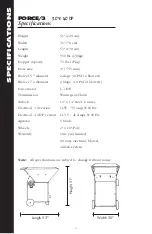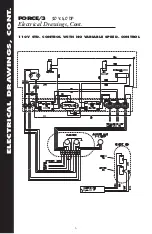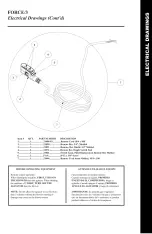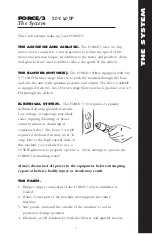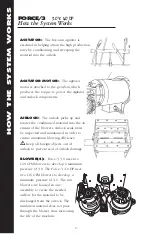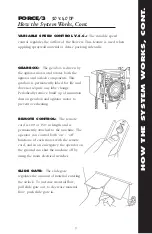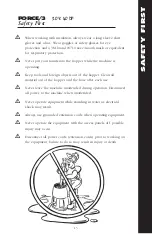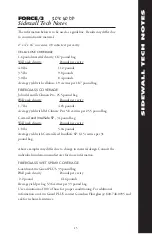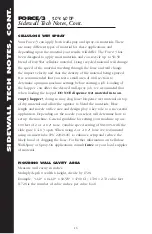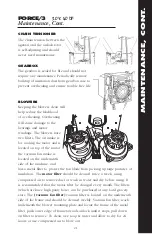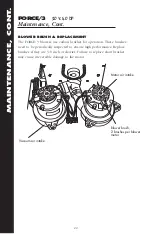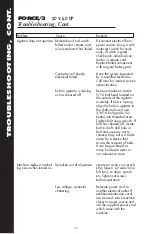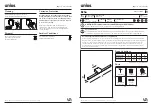
S
E
T
-
U
P
A
N
D
O
P
E
R
A
T
I
O
N
,
C
O
N
T
.
11
FORCE/3
3.0 & 4.0 DP
Set-Up and Operation, Cont.
OPERATION FROM ELECTRICAL PANEL:
Position both
switches on the
remote cord
to the
“on”
position to allow control of
the machine at the main electrical panel
BLOWING IN THE ATTIC:
Start the job at the farthest point from
the entrance of the attic and work your way back to the entrance. Use
the shortest hose possible to ensure maximum production and use the
slide gate to optimize the air to product ratio. Blow the material at waist
level and parallel to the joists to the desired depth. Using the remote
cord, turn “on” or “off” the desired motor to assist you in moving
around the attic.
Do not use less than 100 feet of blowing hose.
Failure to do so will cause improper coverage and conditioning of
material.
FIBERGLASS SETUP:
When blowing premium blowing wool, i.e.
Certainteed Insul-Safe IV, Guardian Prowhite III or Johns Manville
Climate Pro it is strongly recommended that 150' of hose be used. The
extra 50' section allows for additional conditioning of the material,
which is beneficial for proper density and coverage. For optimum
results use 3" hose for the first 100' and reduce down to 2-
1
⁄
2
" for the last
50'. This hose configuration helps attain maximum conditioning, giving
the operator maximum loft at the end of the hose. Do not use your
hand at the end of the hose to direct material, as this affects the
conditioning process and is not recommended by the insulation
manufacturers.
CELLULOSE SETUP:
When blowing light density cellulose it is
recommended that the operator use a minimum of 100' of 3" hose
allowing for the extra conditioning of the material needed to achieve
the proper density and coverage. If coverage is not per the
manufacturer’s specifications on the bag, reduce the slide gate opening
by 25% and add an additional 50' of 3" hose.
Note:
Some cellulose
materials are manufactured by injecting liquid into the paper to make
the cellulose fire retardant. This may cause poor or low coverage of the
material during colder seasons as the material can freeze and become
chunky. If you continue to experience poor coverage after reducing the
S
E
T
-
U
P
A
N
D
O
P
E
R
A
T
I
O
N
,
C
O
N
T
.


